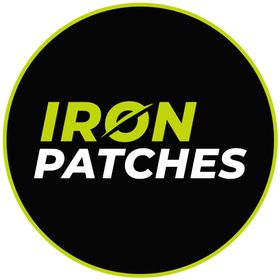It’s funny, well, not ha-ha funny, but more like a head-shaking, sigh-in-the-kitchen kind of funny, how often people complicate what should be simple. Especially with leather. Mention the words iron-on patch in the same sentence as leather jacket and you’ll see faces scrunch up like someone just dropped a lemon in their coffee. The usual reaction: “Nope, impossible. Don’t even try it.”
But that’s the thing. Humans are wired to distrust easy solutions. We assume if something looks straightforward, it must be hiding a trap (like those cookie-cutter “get rich quick” schemes all over TikTok, half nonsense, half genius, depending on who you ask). Attaching a custom iron custom patch to leather is no different. Most people throw up their hands, buy industrial glue, or call in a tailor. But hidden in plain sight are tiny shortcuts, simple, overlooked, almost boring, that actually work.
And because they’re “too simple,” they often get ignored. That’s the tragedy. Or maybe the comedy. Depends how much you’ve already ruined your favourite jacket.
Shortcut One: The Barrier Cloth Trick
Direct heat on leather? Disaster waiting to happen. Scorched, shiny embroidered patches that look like you ironed a pancake on your sleeve. The internet is littered with horror stories.
But there’s this trick, so basic it feels like cheating. Put a thin cotton cloth, like an old pillowcase (mine had faint blue stripes from the 90s, smelled faintly of detergent and dust), between the custom patch and the iron. That’s it.
Why do people ignore it? Maybe because it feels counterproductive. Like putting a muffler on a speaker and expecting the music to still be loud. But that’s how heat works, it travels. The cloth doesn’t stop it; it just… filters it.
I once watched a biker, he had the full look: beard, cigarette tucked behind the ear, jacket that looked like it had been dragged through three decades of rainstorms, iron on patches using nothing but a thin dish towel as a shield. Not a single scorch. His friends? They went direct. Their vests had these shiny, weird blotches that looked like someone licked them with a blowtorch.
Sometimes protection is not a barrier. It’s a translator.
Shortcut Two: Warm from the Inside Out
This one feels almost poetic, like warming your hands around a mug before holding someone’s. Instead of blasting heat from the outside, you warm the leather gently from the inside, slip a hot water bottle into a jacket sleeve, or let a hair dryer hum inside a bag for a few minutes.
At first glance, it sounds silly. Who thinks of pre-heating leather like an oven? Yet leather, thick and moody as it is, responds beautifully when coaxed from within.
When I tried it with an old satchel (dark brown, smelled faintly of books and rain), the patch stuck like a stubborn memory. Months later, even after tossing it in the backseat of my car during Florida’s blistering July, the patch didn’t budge. The other satchel, patched cold and rushed, peeled like a cheap sticker on a wet water bottle.
We forget sometimes that success is about prep, not force. The inside matters more than the outside. Maybe that’s not just about leather.
Shortcut Three: The Marriage of Glue and Heat
Here’s a shortcut people sneer at: why use both glue and heat? Isn’t that doubling up like wearing two raincoats? Maybe. But sometimes two layers of protection just feel right.
Apply a whisper-thin layer of fabric glue, barely there, like a ghost, and then follow up with gentle ironing through (again) a barrier cloth. The glue anchors, the heat flattens, the combination endures.
A stranger on a DIY forum (username “PatchDad1976,” which tells you all you need to know) swore by this. He patched his son’s leather schoolbag. Rain, rough playground scuffles, the occasional juice-box explosion, patch still clung on like a limpet. Without glue, his earlier attempts slid off within weeks.
It’s almost like a relationship. Heat brings the drama, the spark, but glue is the quiet commitment underneath. Together, they last.
Shortcut Four: Forget the Iron—Hello, Hair Straightener
I laughed when I first heard this. A hair straightener? For leather patches? Ridiculous. Then I tried it. And… well. It worked like magic.
Irons are blunt instruments. Big, clumsy, spreading heat everywhere. But a straightener, or a small heat press tool, focuses the warmth like a sniper’s gaze. Perfect for those tricky seams or curved boot edges.
Back in university, a friend of mine decorated her black boots with tiny embroidered patches, using nothing but her cheap hostel hair straightener. People thought she’d bought them custom. She never admitted the truth, not even once. Sometimes creativity is just repurposing what you already own.
Why is this overlooked? Maybe because we’re stuck in the “this tool has one purpose” mindset. But humans have always hacked tools, bones into knives, iPhones into flashlights. A straightener on leather is just another hack in a very old tradition.
Shortcut Five: Just Stitch the Edges (and Cheat the Rest)
Now here’s where purists get mad. They’ll say, “If you’re stitching, you might as well stitch the whole thing.” But that’s like saying if you run, you have to run a marathon. No. You can jog around the block and still count it.
The shortcut? Iron (or glue, or both) the patch first. Then, once it’s secure, run a quick hand-stitch around the border. Not the whole thing, just the edges. It’s decorative, stabilising, and takes ten minutes instead of two hours.
I once met a guy at a flea market wearing a leather jacket with a faded rock-band patch. It was stitched only at the corners, four tiny anchor points. He shrugged when I asked about it, said he was “too lazy” to do more. That patch had outlasted his marriage (his words, not mine). Laziness, in that case, was resilience.
So, what’s the point of all these shortcuts?
It isn’t just about patches. It’s about the way we dismiss simple answers because they feel… unworthy. We want complexity, drama, sweat. Yet it’s usually the overlooked, almost laughable tricks that deliver.
Yes, you can iron on patches to leather. Not by bulldozing it with heat, but by sneaking in sideways: cloth shields, internal warmth, glue marriages, hair straightener hacks, lazy stitches. Each method, a little rebellion against the assumption that “easy” equals “wrong.”
And maybe that’s a lesson worth stealing for other things too. Not just leather. Relationships, careers, politics, even climate innovation, where sometimes the obvious answer (plant more trees, use less plastic) gets drowned out by talk of futuristic moonshot tech.
So next time you hold a patch in your hand and think, “Nah, leather’s too hard,” try one of these. Or all of them. And maybe laugh a little at how something you thought impossible was only hiding behind a thin pillowcase and a bit of imagination.


